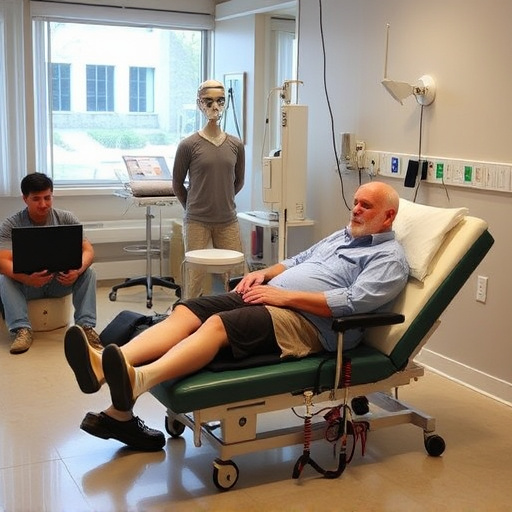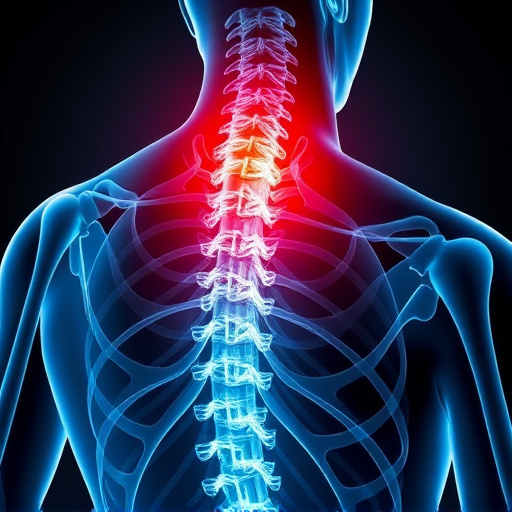Chronic pain management requires a personalized approach starting with understanding triggers through detailed journaling. Combining lifestyle adjustments like exercise and stress reduction with medical options, including physical therapy and medication, offers tailored solutions. Proactive planning, continuous evaluation, and resilience building are key to effectively managing unique chronic pain experiences, empowering individuals to adapt and cope.
Chronic pain is a complex condition, but taking control of your treatment can empower you. In this article, we guide you through crafting a personalized chronic pain management plan. We explore key steps such as understanding your pain triggers and patterns, making strategic lifestyle adjustments, exploring medical options, and building resilience. By implementing these strategies and tracking your progress, you’ll gain the tools to effectively manage your chronic pain and enhance your quality of life.
- Understanding Your Chronic Pain: Identifying Triggers and Patterns
- Creating a Personalized Strategy: Lifestyle Adjustments and Medical Options
- Implementing and Tracking: Building Resilience and Adjusting as Needed
Understanding Your Chronic Pain: Identifying Triggers and Patterns

Chronic pain is a complex condition that demands a personalized approach for effective management. The first step in creating your chronic pain management plan is to gain profound insight into your pain—its origins and patterns. This involves identifying triggers that set off or exacerbate your pain, be it specific physical activities, certain environmental conditions, or even emotional states. For instance, if you experience sciatica relief after resting or taking particular medication, this provides valuable information about the potential causes of your chronic pain.
By keeping a detailed pain journal, noting when and where the pain occurs, and what seems to intensify it, you can start recognizing patterns. This knowledge is pivotal in tailoring strategies for chronic pain relief. Understanding these triggers empowers you to make informed decisions about lifestyle changes, therapies, or treatments that align with your unique needs, ultimately enhancing your ability to manage and reduce chronic pain effectively.
Creating a Personalized Strategy: Lifestyle Adjustments and Medical Options

Creating a personalized strategy is key to effective chronic pain management. This involves a combination of lifestyle adjustments and medical options tailored to your unique needs. Lifestyle changes, such as regular exercise, stress reduction techniques, and improved sleep hygiene, can significantly impact pain levels and overall well-being. Engaging in activities like yoga or swimming, which offer low-impact movement, can enhance flexibility and strengthen muscles without exacerbating pain.
Medical options include a range of non-invasive treatments and, if necessary, prescription medications. Non-invasive treatment approaches, such as functional rehabilitation and physical therapy, focus on restoring function, improving mobility, and reducing pain through specialized exercises and manual therapies. These methods offer an alternative to surgery or more aggressive interventions. Consulting with healthcare professionals is crucial for determining the most suitable approach, ensuring a comprehensive and personalized chronic pain management plan.
Implementing and Tracking: Building Resilience and Adjusting as Needed

Implementing your chronic pain management plan is a crucial step towards taking control of your well-being. It’s not just about adopting strategies; it’s a process of building resilience and adapting to what works best for your unique needs. Each person’s experience with chronic pain is distinct, so consistent evaluation and adjustment are vital. Keep a detailed journal to track your symptoms, the effectiveness of therapeutic exercises or other treatments, and any triggers that might impact your back pain relief or sports injury recovery (if applicable). Regularly reviewing this information allows you to identify patterns and make informed decisions about adjustments in your plan.
Resilience is key when managing chronic pain. It’s about learning to manage discomfort, adapting your activities, and developing coping mechanisms. By consistently monitoring your progress and making necessary changes, you’ll foster a sense of empowerment and better equip yourself to navigate the challenges that come with chronic pain. Remember, it’s an ongoing process, and flexibility is essential as your body and mind adapt to new routines.
Building a personalized chronic pain management plan involves understanding your unique triggers, making strategic lifestyle adjustments, and exploring medical options. By tracking your progress and fostering resilience, you can effectively navigate and manage your chronic pain. Remember that this is an ongoing process, and regular adjustments are key to finding the best approach for your individual needs in managing chronic pain.














